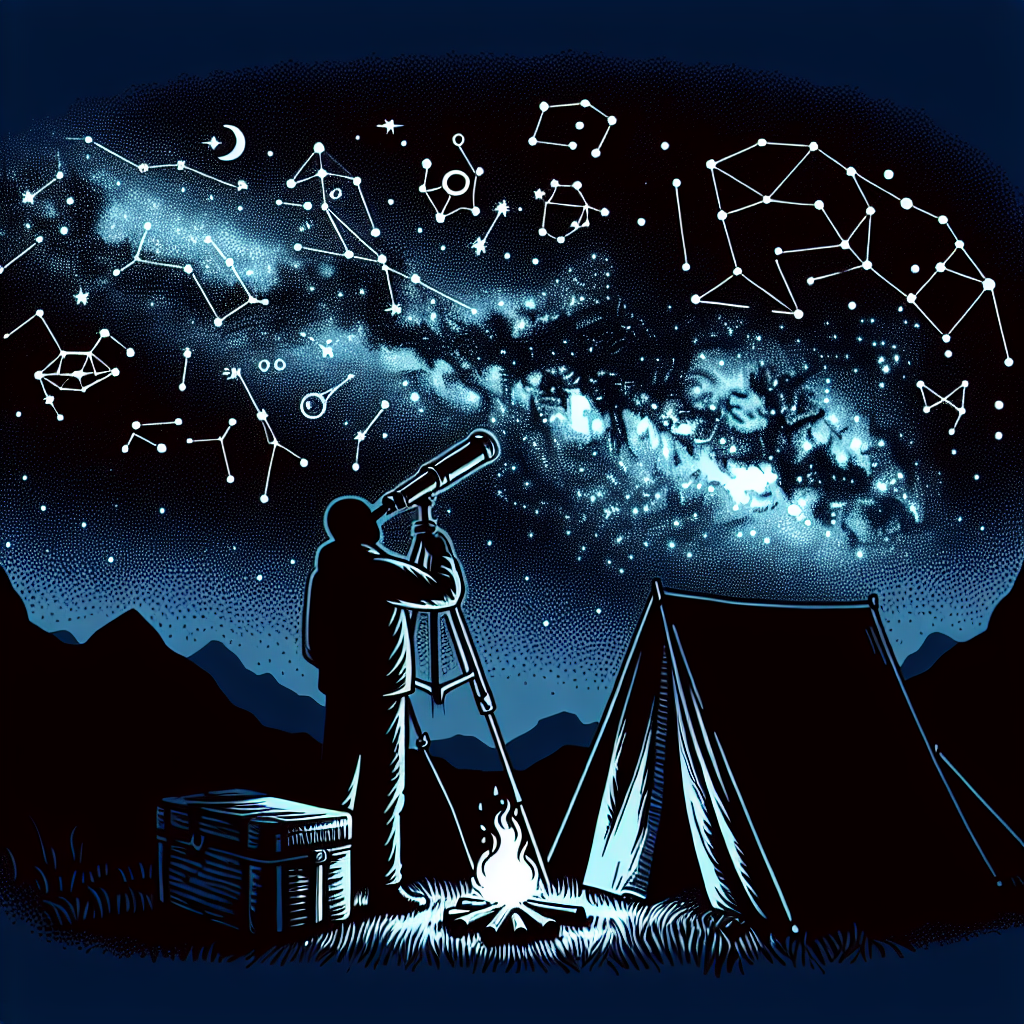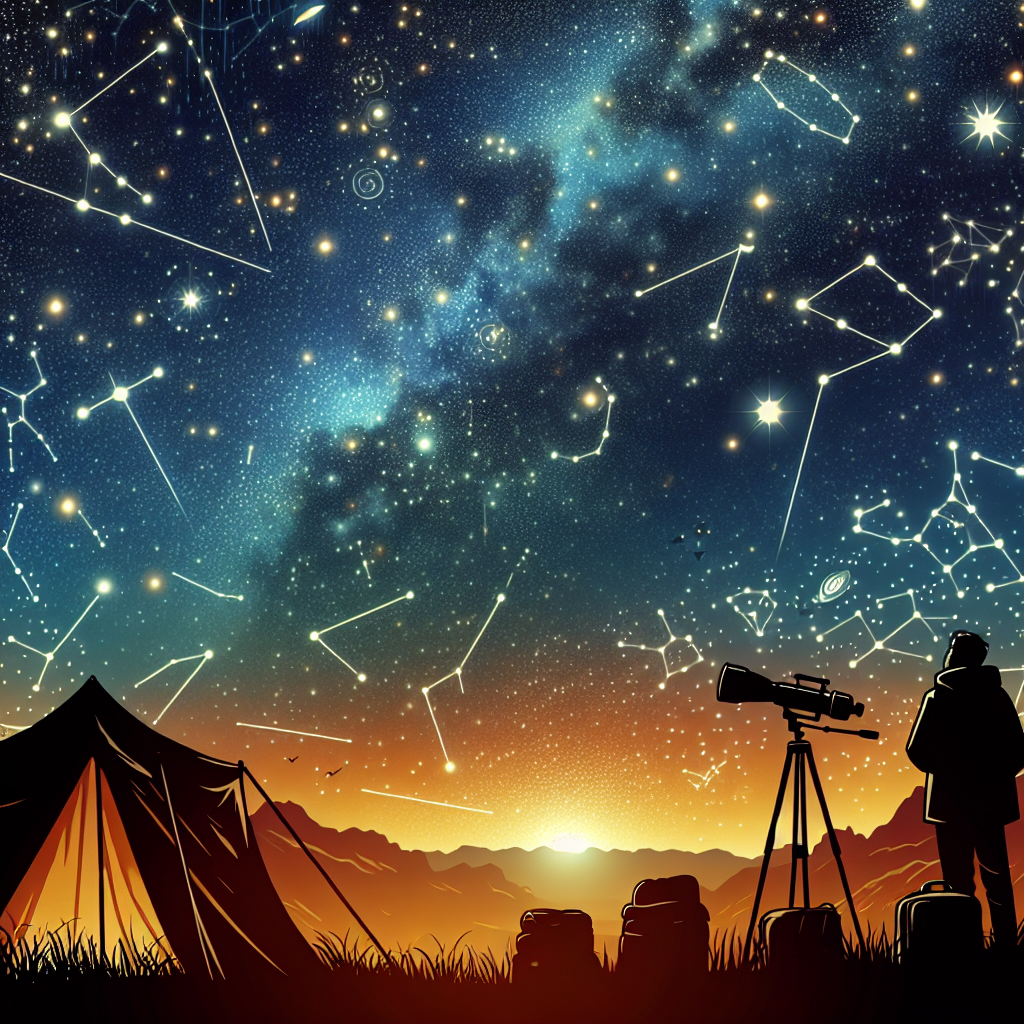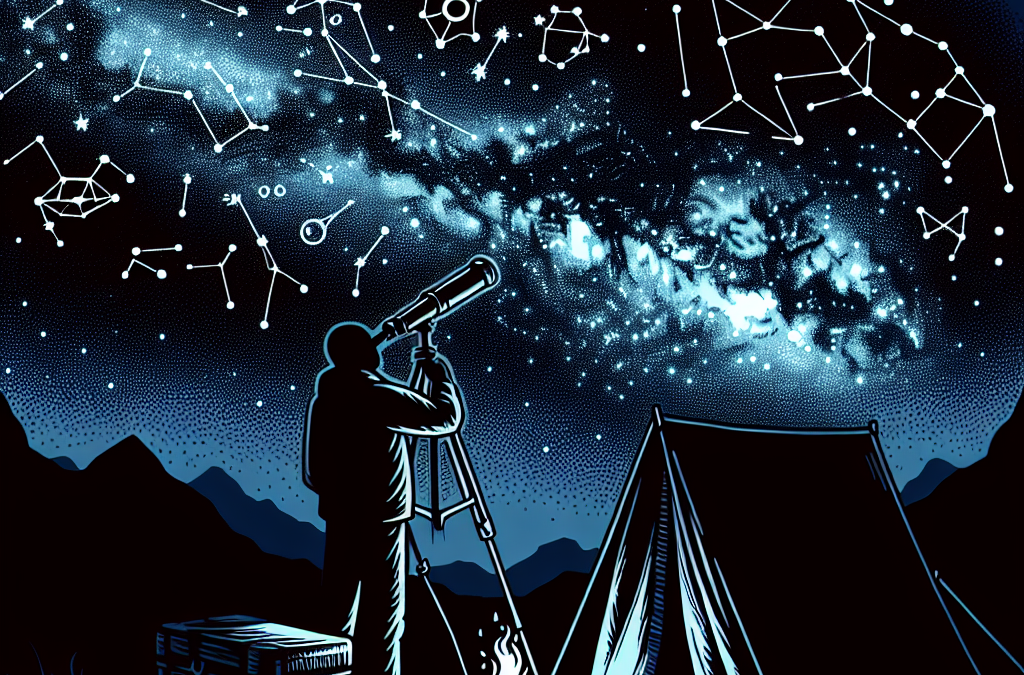Imagine this – you’re out in the wilderness, miles away from the city’s lights and noises, nestled comfortably in your camping gear. As the day fades into night, a spectacular spread of stars unfolds overhead. Star Gazing for Campers: Exploring the Night Sky is right up your alley if this scene excites you. With this guide in hand, you’ll find yourself navigating your way through celestial bodies with newfound confidence and interest. Get ready to unlock the secrets of the universe from the comfort of your campsite.

Understanding Basic Astronomy
Astronomy is a fascinating field that has captivated the curiosity of humans for centuries. It can seem overwhelming at first, but don’t fret. Getting a grasp of the basic concepts can be a fun and rewarding endeavor.
Start with Learning the Constellations
The first step to understanding basic astronomy is to familiarize yourself with the constellations. These are patterns of stars that people have observed and named for millennia, and are great for getting oriented in the night sky. Some of the most recognizable constellations are Ursa Major, Orion, and Cassiopeia. By learning to identify these, you’ll have starting points from which to explore other celestial sights.
Understanding Celestial Bodies
Next, you should aim to get a firm grasp of the different celestial bodies. Stars, planets, moons, asteroids, comets, and galaxies all fall under this category. Each has its own distinguishing features, and understanding these will assist you in identifying them when stargazing.
The Importance of Learning Celestial Motion
Another vital aspect of astronomy is understanding celestial motion, or the way celestial bodies move through the sky. This movement is due to the rotation and revolution of the Earth. By understanding this, you can predict where and when certain celestial bodies will be in the sky.
Locating the North Star
An excellent skill to acquire is locating Polaris, or the North Star. This star sits almost directly above the North Pole, making it an invaluable tool for navigation. Once you find the Big Dipper constellation, simply follow the line created by the two stars at the end of the ‘dipper’ straight to the North Star.
Best Times for Stargazing
Knowing when to go stargazing can enhance your experience. Various factors can impact the quality of your viewing, so it’s beneficial to understand what influences the best stargazing times.
Understanding the Moon Cycle
The moon’s cycle plays a significant role in stargazing. The best time is usually during a new moon when the moon isn’t visible. This lack of moonlight allows for a darker sky and better visibility of the stars.
Factors Affecting Visibility
Beyond the moon’s cycle, other factors such as light pollution and weather can affect visibility. Areas with minimal artificial light, known as “dark sky locations”, provide the best conditions for stargazing. Clear, cloudless nights also make for optimal conditions.
When to Observe Specific Celestial Phenomena
Certain celestial phenomena like meteor showers, supermoons, or solar eclipses are best observed at specific times. Check an astronomical calendar to be aware of these unique stargazing opportunities.
Necessary Equipment for Stargazing
While one can enjoy stargazing with the naked eye, several tools can enhance your experience.
Using a Telescope
Having a telescope can make a huge difference in your stargazing experience. Telescopes allow you to see distant celestial bodies such as planets, galaxies and nebulae in more detail.
Binoculars for Stargazing
If you’re starting, binoculars can be an excellent alternative to a telescope. They’re portable, easy to use, and perfect for viewing the moon or constellations in greater detail.
Apps and Software Aids
Various applications and software can guide you as you explore the night sky. These astronomy apps provide real-time stargazing guides and are an excellent resource for budding astronomers.
Choosing the Best Location
The location you choose for stargazing can significantly affect the quality of your viewing.
The Impact of Light Pollution
Light pollution from cities and towns often washes out the night sky and makes it tough to see faint stars and other celestial bodies. Try to find a spot far from city lights for the best visibility.
Ideal Camping Locations for Stargazing
Camping is a wonderful activity that pairs well with stargazing. National parks, forests, and designated dark sky preserves are all fantastic locations for stargazing.
The Role of Weather and Atmosphere
Clear skies are essential for proper stargazing. Clouds, fog, and even high levels of humidity can hinder your view of the stars.

Observing Planets and Other Celestial Bodies
With a bit of knowledge and the right tools, you can observe more than stars in the night sky.
Identifying Planets in the Night Sky
Planets often shine brighter than stars and don’t twinkle, making them fairly easy to spot. The planetary motion is different from stars, moving considerably through the sky night-to-night and month-to-month.
Tracking the Movement of Planets
Once you can identify planets, you can track their motion. This involves recording their position relative to the stars over the course of several nights or weeks.
Observing Meteor Showers and Comets
Meteor showers occur when the Earth passes through a dust cloud left by a comet, and are best observable during peak times. Comets, on the other hand, are occasionally visible to the naked eye.
Mapping the Night Sky
Learning to map the night sky will enhance your stargazing experience.
Understanding Star Maps
Star maps are helpful tools that display the position of stars and other celestial bodies at a specific time and location.
How to Use a Planisphere
A planisphere is a simple, hand-held device that shows a map of the stars visible at any given time. By aligning the date and time, you can see what constellations and celestial bodies are visible.
Apps for Sky Mapping
Many apps can assist in mapping the night sky in real-time. Simply point your device at the sky to identify stars, constellations, and other celestial objects.
Astronomy Safety Tips
As you explore the night sky, remember to take care of your health and safety.
Protecting Your Vision
Safeguarding your vision is vital when stargazing. Always give your eyes time to adjust to the darkness, and avoid looking directly at bright lights.
Observing the Sun Safely
Never look directly at the Sun, especially through a telescope or binoculars. Using a safe solar filter can protect your eyes while observing the sun.
Weather Considerations
Stargazing can mean being outdoors for extended periods, often during the night. Dress appropriately for the weather and always check the forecast beforehand.
Documenting Your Observations
Recording your observations helps you learn and track your progress.
Keeping an Astronomy Journal
Creating a journal to jot down what you see is an excellent way to document your findings. You can record the date, time, weather conditions, location, equipment used, and what celestial bodies you observed.
Astrophotography Basics
Astrophotography involves capturing images of celestial bodies, and can be as simple or as complex as you want it to be. Even a smartphone can capture impressive photos of the night sky.
Sharing Your Findings with Others
Sharing your findings can be fulfilling, and can also help you learn. You could show your findings to friends and family, or share them on online platforms or forums.
Advanced Topics in Astronomy
Once you’ve grasped the basics, delve deeper into fascinating topics.
Delving into Astrophysics
Astrophysics explores the physical properties and processes of celestial bodies and phenomena. It covers everything from how stars work to the structure of the universe.
Understanding Deep Sky Objects
Deep sky objects like galaxies, nebulae, and clusters are far away and often require a telescope to see. They serve as a gateway to observing the more distant universe.
Exploring Cosmology
Cosmology is the study of the universe as a whole, including its origins, evolution, structure, and eventual fate. It broadens your understanding of your place in the universe.
Connecting With Other Astronomy Enthusiasts
Being part of a community can enrich your astronomy experience.
Joining Astronomy Clubs
Astronomy clubs are excellent for learning from others, attending events, and making new friends. They often organize stargazing outings, lectures, and other valuable activities.
Attending Star Parties
Star parties are social gatherings where enthusiasts meet to observe the sky together. They can range from small local meet-ups to large, organized events with guest speakers and activities.
Online Communities and Forums
The internet is home to numerous astronomy forums where individuals share observations, ask questions, and discuss various topics. Online communities are wonderful for connecting with others who share your passion, regardless of your location.
In conclusion, exploring the night sky is an adventure that provides endless fascination and enjoyment. As you dive into this exciting hobby, remember to take it at your own pace and most importantly, enjoy the journey.

